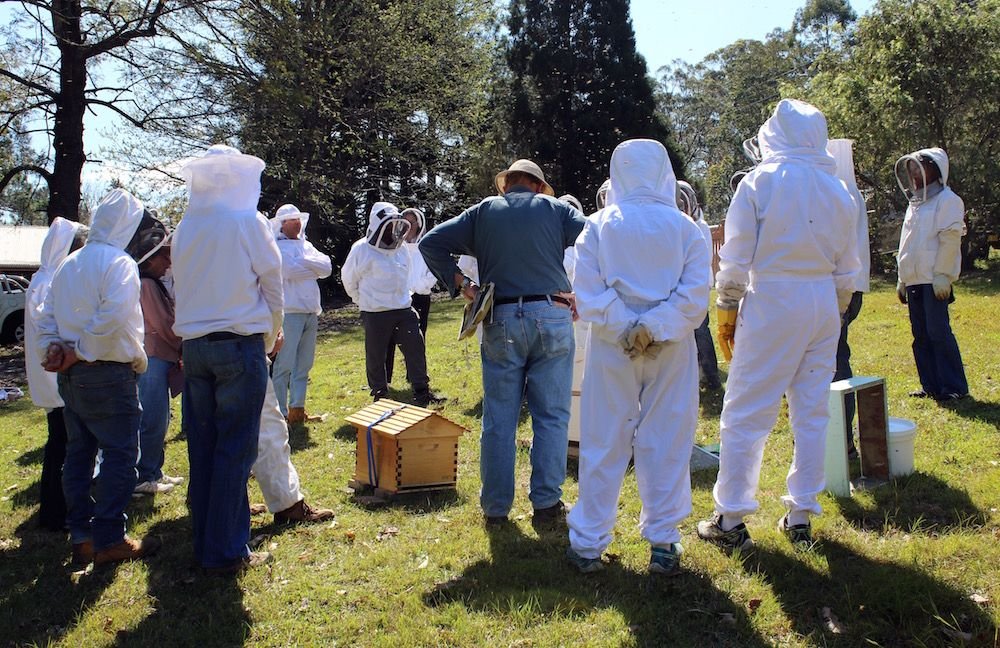The Ultimate Guide to Bees Suit: A Beekeeper’s Essential Armor
Beekeeping, a harmonious blend of nature and science, is a deeply rewarding practice that allows humans to connect with one of the most vital creatures on Earth—bees. However, it comes with challenges, particularly the risk of stings. The bees suit, a beekeeper’s indispensable armor, is designed to provide comprehensive protection and peace of mind while interacting with these industrious insects. This article takes a deep dive into the bees suit, its features, importance, types, and maintenance, offering an in-depth perspective for both novice and experienced beekeepers.
What is a Bees Suit?
A bees suit is a full-body protective outfit worn by beekeepers to safeguard themselves from bee stings during hive inspections, honey harvesting, or any interaction with bees. It comprises:
A lightweight, durable suit covering the entire body.
A veil to protect the face and neck while ensuring visibility.
Gloves to shield the hands without compromising dexterity.
Elastic cuffs, zippers, and drawstrings to seal potential entry points for bees.
The bees suit is more than just attire; it is a critical tool that bridges the gap between humans and bees, enabling safe and effective hive management.
Features of a High-Quality Bees Suit
1. Full-Body Protection
The primary function of a bees suit is to shield the beekeeper from head to toe. It provides complete coverage, ensuring no skin is exposed. Elastic bands at the wrists, ankles, and waist ensure a tight seal, preventing bees from finding their way inside the suit.
2. Protective Veil
The veil is arguably the most critical part of the bees suit. Bees are naturally defensive and often target the face. A high-quality veil protects the beekeeper while allowing clear visibility and comfort.
Round Veil: A spacious option with excellent ventilation and a wide field of view.
Fencing Veil: Sleek and compact, providing a modern look with less bulk.
Square Veil: A traditional choice that offers durability and comfort for extended beekeeping sessions.
3. Durable Material
The material of a bees suit determines its effectiveness and comfort:
Cotton: Soft, breathable, and lightweight, making it ideal for moderate climates.
Polyester Blends: Durable, easy to clean, and resistant to wear and tear.
Ventilated Mesh: Perfect for warm climates, featuring layers of mesh that allow airflow while maintaining protection.
4. Light Colors
Bees suits are traditionally white or light-colored because bees associate dark colors with predators. Light shades keep bees calmer, reducing the likelihood of aggressive behavior.
5. Secure Closures
Zippers, drawstrings, and elastic bands at key points such as wrists, ankles, and the neck ensure that bees cannot sneak inside. Overlapping flaps over zippers add an extra layer of security.
6. Gloves and Boot Compatibility
Long gloves, made of leather or thick fabric, are included or paired with the bees suit to protect the hands while allowing delicate movements. The lower part of the suit is designed to integrate seamlessly with boots, providing full leg coverage.
Types of Bees Suits
1. Full Bees Suit
A complete, head-to-toe outfit offering the highest level of protection. It includes an attached veil and is ideal for beginners or when working with particularly aggressive colonies.
2. Bees Jacket
A jacket-style bees suit that protects the upper body. Paired with gloves and protective pants, this option is suitable for experienced beekeepers handling calmer hives.
3. Ventilated Bees Suit
This modern variation features mesh panels for airflow, making it ideal for beekeepers working in hot climates. Despite its lightweight feel, it provides the same level of protection as traditional suits.
4. Specialty Bees Suits
Designed for specific needs, such as extra-durable suits for dealing with Africanized bees or lightweight suits for quick inspections.
Why is a Bees Suit Essential?
1. Protection from Bee Stings
Bee stings can be more than just a minor irritation; for some, they can lead to severe allergic reactions or anaphylaxis. A bees suit creates a physical barrier that minimizes the risk of stings, ensuring safety.
2. Confidence in Beekeeping
Fear of stings can hinder a beekeeper’s ability to perform tasks effectively. A well-designed bees suit provides the confidence needed to work calmly and efficiently.
3. Preservation of Hive Harmony
By preventing aggressive interactions, a bees suit reduces the likelihood of disturbing the hive. This not only keeps the beekeeper safe but also ensures the health and productivity of the bees.
Choosing the Right Bees Suit
Selecting the right bees suit is crucial for an enjoyable and safe beekeeping experience. Here’s what to consider:
1. Fit and Comfort
The suit should fit snugly but allow for easy movement.
Adjustable straps and elastic closures ensure a secure fit.
2. Material and Durability
For general use, polyester blends offer durability and resistance to wear.
Ventilated suits are ideal for hot weather, keeping you cool during long sessions.
3. Veil Style
Beginners may prefer a round veil for maximum visibility and space.
Fencing veils are popular among experienced beekeepers for their modern design.
4. Additional Features
Reinforced knees for durability during inspections.
Pockets for tools and accessories.
Easy-to-use zippers with overlapping flaps for enhanced protection.
Caring for Your Bees Suit
Proper maintenance ensures your bees suit remains effective and lasts for years:
Regular Washing
Clean the suit after every use to remove honey, propolis, and pheromones that might attract bees.
Use mild detergent and cold water to preserve fabric integrity.
Inspect for Damage
Check for tears, holes, or worn-out seams. Prompt repairs are essential to maintain protection.
Storage
Store the bees suit in a cool, dry place, away from direct sunlight and pests.
Keep it separate from scented items, as strong smells can agitate bees.
Pro Tips for Using a Bees Suit
Always double-check zippers, cuffs, and drawstrings before approaching a hive.
Wear closed-toe boots and tuck the pants of your bees suit into the boots for extra safety.
Use a smoker to calm the bees, reducing the risk of stings.
Avoid wearing strong perfumes or scented lotions, as these can provoke bees.
Conclusion:
The bees suit is an essential tool for every beekeeper, providing protection, confidence, and peace of mind. By investing in a high-quality bees suit tailored to your needs, you ensure a safer and more enjoyable beekeeping experience. Whether you’re harvesting honey, inspecting brood, or simply observing the hive, the right bees suit allows you to focus on the sweet rewards of beekeeping while maintaining harmony with your buzzing companions.
With proper care and the right choice, your bees suit will become your most trusted ally in the fascinating world of beekeeping.







